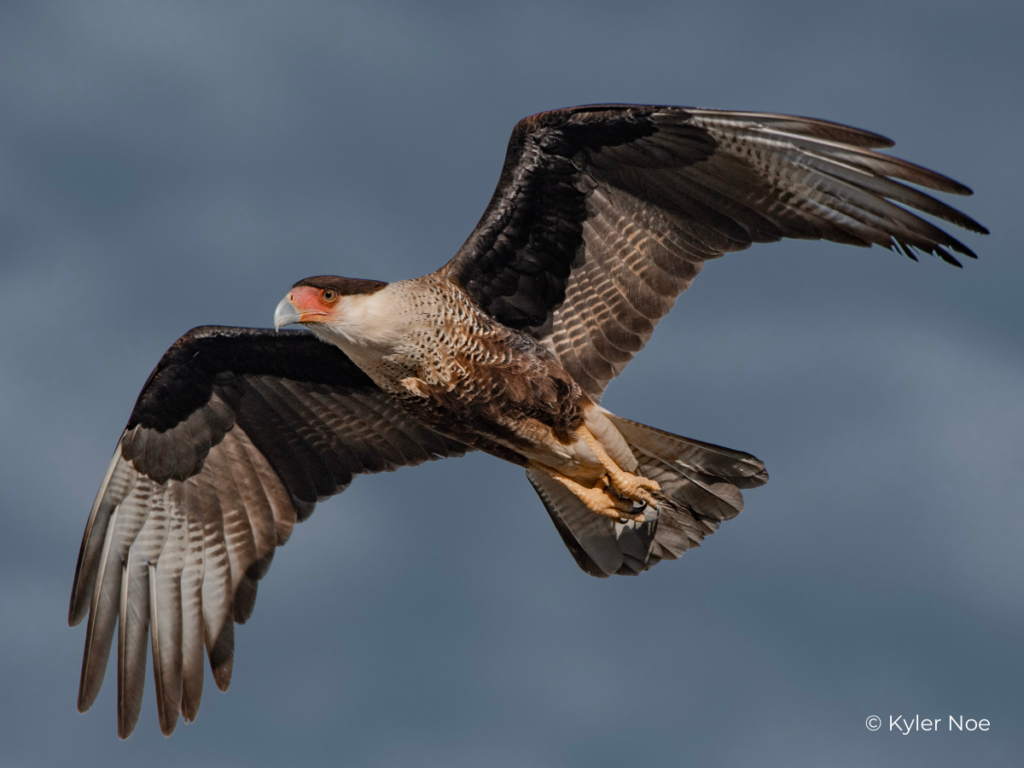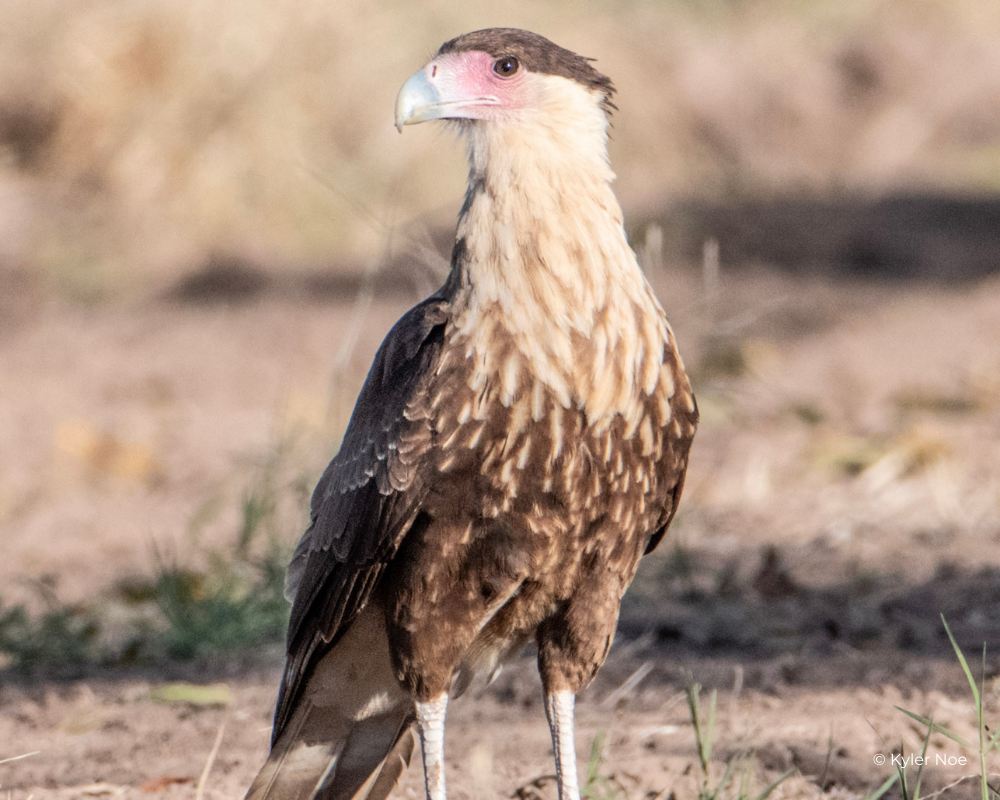Overview
The Crested Caracara is a distinctive raptor, often seen with Turkey Vultures and White-tailed Hawks in cattle country and mesquite grasslands of South Texas, ranging south to northern South America. It is also found in Arizona (mainly in Pima CO) and south-central Florida and is comfortable around developed areas with appropriate open space as much as remote areas. Its striking plumage, shape, and long legs make it easy to pick out among the vultures with which they are often associated. Crested Caracara often occurs in small groups concentrating around carrion and roadkill. They also hunt live prey, including mice, insects, reptiles, and birds.
Taxonomically, Crested Caracara is considered a falcon, but it is very different in structure from other North American falcons, and the association sometimes confuses birders. It is a good flier, but it walks as much as it flies and lacks the pointed wings, sleek profile, and direct pursuits hunting style of other falcons. Caracara perches on power poles and fence posts and is often seen leaning into strong winds more than standing upright. Caracara calls with a low-pitched rattle or raven-esque croaking klak, klak, klak; greeaaaaa.




